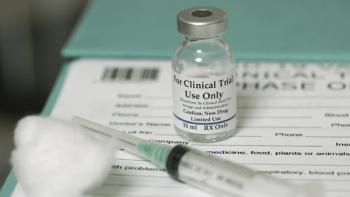At the 2025 ASCRS meeting in Los Angeles, California, eye care professionals gathered to share insights, innovations, and experiences to strengthen their commitment to delivering superior visual outcomes. At the meeting, Alex Hacopian, MD, next-generation presbyopia-correcting intraocular lenses (IOLs) continue to be a focal point, offering patients greater range and visual independence than ever before.
Managing expectations with a personalized approach
Key takeaways for optometrists:
- Pre-op ocular surface optimization is essential for accurate biometry and better outcomes.
- Clear patient communication about post-op expectations enhances satisfaction.
- Tailored IOL recommendations based on hobbies and lifestyle lead to more meaningful results.
- New IOL technology is delivering exceptional distance and near acuity, even exceeding 20/20 in some cases.
- Collaboration with surgeons strengthens care continuity and patient trust.
While these IOLs significantly enhance range of vision, it’s critical to remember—and to communicate—that no artificial lens fully replicates the perfection of the natural crystalline lens. Preoperative counseling remains vital. Educating patients on what to realistically expect following surgery helps ensure satisfaction and trust in the surgical outcome.
The best surgical outcomes begin long before the operating room. Optimizing the ocular surface preoperatively enhances biometry, improves IOL power calculation accuracy, and, ultimately, contributes to better refractive outcomes. This foundational step cannot be overstated, especially in patients seeking premium IOL options.
Tailoring technology to the patient
Today’s IOLs can support a wide range of visual demands. Whether patients are tying fishing flies, changing watch batteries, reading scripture, using digital devices, or watching a ballgame with closed captions, these lenses allow for impressive functional vision. This breadth of utility boosts confidence in recommending such lenses.
A recent study involving 40 patients with bilateral implantation of next-gen IOLs revealed surprising results—average distance visual acuity exceeded 20/20, with many patients achieving nearly 20/15. Coupled with solid near vision, this performance underscores the power of modern IOL design.
The optometrist's role
As primary eye care providers and preoperative counselors, optometrists play a crucial role in identifying visual goals and lifestyle needs. Listening carefully during preoperative evaluations allows for the customization of IOL selection, aligning lens technology with patient expectations.














































.png)


